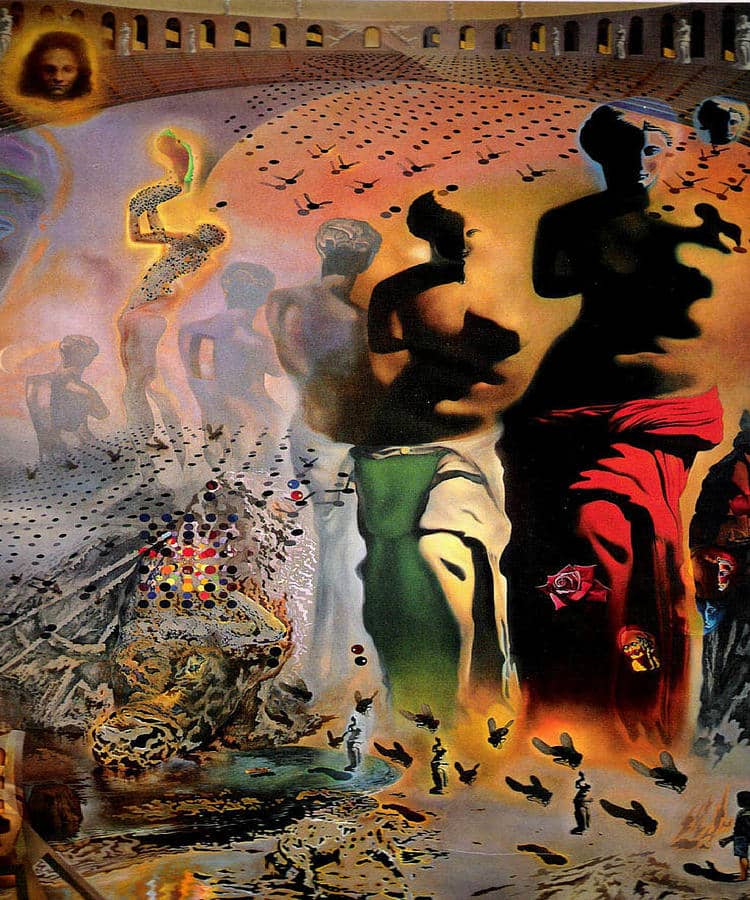The Hallucinogenic Toreador, 1968-1970 by Salvador Dali

The Hallucinogenic Toreador was created by Salvador Dali in 1970, following the canons of his particular interpretation of surrealist thought. It is currently being exhibited at the Salvador Dali Museum in St. Petersburg, Florida. In this piece, Dali transmits his wife's dislike for bullfighting. By combining symbolism with optical illusions and estranging yet familiar motifs, he creates his own visual language. His application of the paranoiac-critical method within this painting combines versatile images as an instructive example of his artistic creation.
The whole scene is contained in a bullfight arena. Afternoon shadows sweep to the left and engulf a panorama of memories and visual associations: the gadflies of St. Narciso, patron saint of Catalonia, swarm over the arena and form the cap, hairnet, and cape of the bullfighter and the tear in his eye, together with the shape of a dying bull in the lower left; a pool of the bull's blood and saliva transforms itself into a sheltered bay with a sunbather on an inflatable mattress; the flotsam and jetsam in the lower section of the beach take on the shape of a Dalmatian dog, its head facing the pool of water; the green tie of the toreador makes a visual twin of the shadows of Venus' garment; the form of the slain bull rises to become the sheltering mountain landscape of the Cape Creus area around Port Lligat, where this work was painted; a mountain, which in turn is mimicked on the right by the inclusion of a craggy peak with a rose near its summit, recalls the precipitous mountains around the town of Rosas, near Dali's studio.























